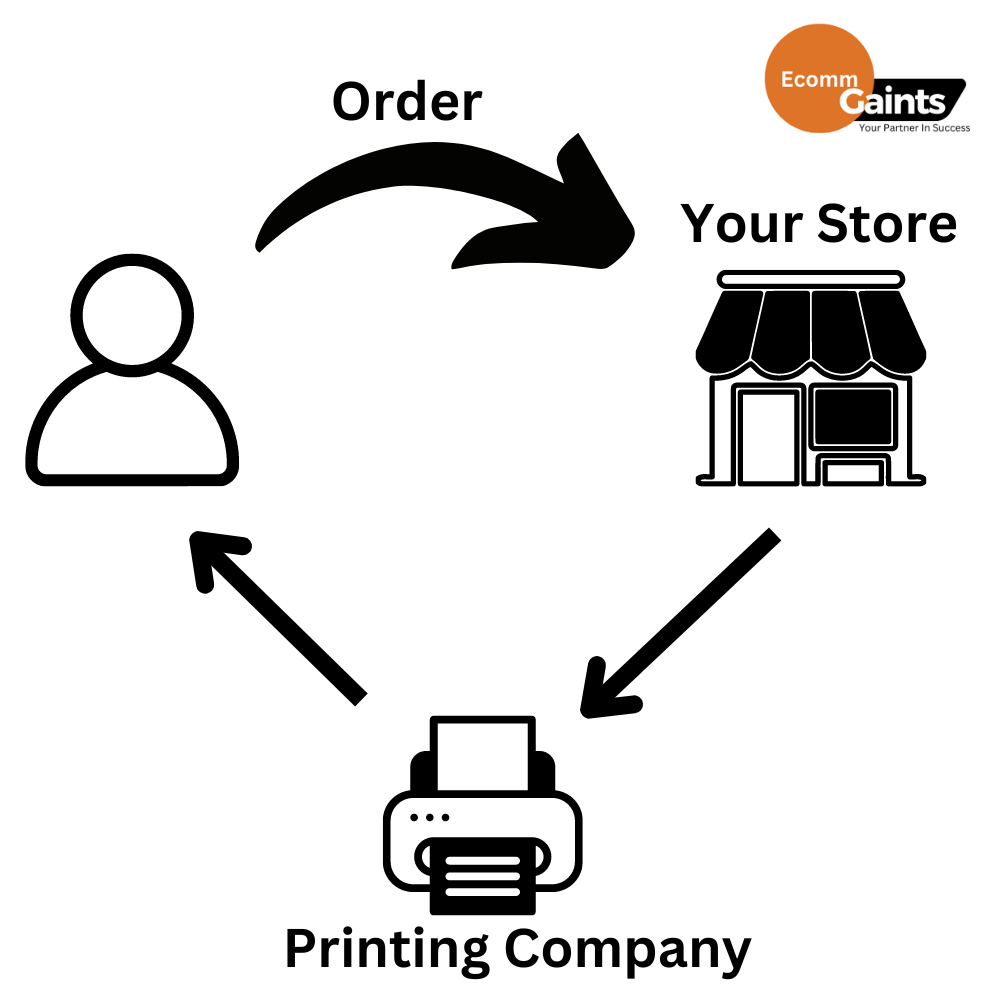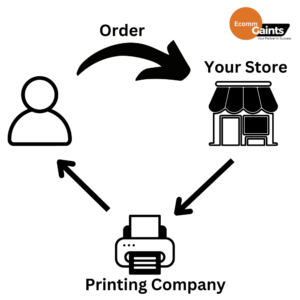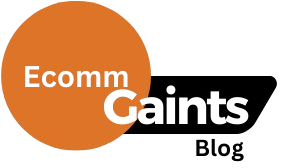
Starting a Print on Demand Business

Print on demand (POD) is a business model that enables you to sell custom-designed products like t-shirts, mugs, or phone cases without needing to maintain any inventory. When a customer orders from your store, the item is printed and shipped directly to them by a POD provider, which means you don’t have to deal with the products yourself. This model is a low-risk way to start selling online since you only pay for items after they’ve been sold.
Benefits of a POD Business
- Low Upfront Costs: You don’t have to invest in bulk products or worry about inventory, keeping your startup costs low.
- No Inventory Management: You won’t need to store, manage, or ship any products; the POD provider handles everything.
- Custom Products: You can create unique designs and offer a range of customized items.
- Low Risk: You only pay for products once a customer orders, so there’s minimal financial risk.
Examples of POD Products
- T-shirts and hoodies
- Mugs
- Phone cases
- Tote bags
- Posters and canvas prints
- Hats and beanies
- Stickers and notebooks
- Custom Bra and Panties
- Pillows
- Jewelry
Research and Planning
1. Identify a Niche or Target Audience
Begin by determining your target market. This could be a specific group such as cat enthusiasts, fitness buffs, or those who love motivational quotes. Choosing a niche allows you to differentiate yourself and build a loyal customer base.
Tools to assist you in this process:
- Google Trends: Investigate trending topics and product demand within your niche.
- Etsy: Look for popular products and designs in your niche to gauge what’s selling well.
- Pinterest: Find trending designs and ideas that resonate with your niche.
- Instagram Hashtags: Explore niche-related hashtags to see what’s currently popular in terms of designs and products.
Example hashtags: #fitnessgear, #catloversmerch
2. Research Market Trends and Popular Products
Examine what’s trending in your selected niche. Utilize platforms like Etsy, Instagram, or Google Trends to identify popular designs and products. This insight will help you create items that people are eager to purchase.
Design Tools:
- Canva: A user-friendly design tool with templates for product creation.
- Adobe Photoshop: A professional-grade tool for crafting custom designs, featuring advanced capabilities.
- Placeit: Provides design templates and mockups for various products, including t-shirts and mugs.
3. Choose What Type of Products to Sell
After conducting your research, determine which products align with your niche. For instance, if your audience consists of yoga lovers, consider selling custom-designed yoga mats, water bottles, or cozy hoodies. Concentrate on items that fit your niche and are in demand.
POD Services to Consider:
- Printful: A well-known print-on-demand service that integrates with major e-commerce platforms like Shopify and Etsy.
- Printify: Offers a wide range of products and various print-on-demand providers to select from.
- Redbubble: A marketplace where you can upload your designs and sell them on a variety of products.
Choosing a Print on Demand Platform
Overview of Popular (POD) Print on Demand Platforms
Printful
This platform provides a diverse selection of products, including clothing, accessories, and home decor. It seamlessly integrates with platforms like Shopify, Etsy, and WooCommerce, ensuring high-quality products and quick fulfillment. With global shipping options, it simplifies selling to customers around the world.
Printify
Printify boasts a large network of print providers, allowing access to competitive pricing. It offers over 600 products, such as t-shirts, mugs, and phone cases. You can choose your print provider based on factors like location, shipping costs, and product variety. It also integrates well with Shopify, Etsy, eBay, and WooCommerce.
Redbubble
Redbubble operates as a marketplace where you can upload your designs, and they take care of everything from production to shipping. This is an excellent option for artists who want a straightforward way to sell their designs without the hassle of managing a separate store. They offer a broad range of products, including clothing, home goods, and stationery, and actively promote your designs to their existing customer base, making it a more hands-off selling experience.
Factors to Consider
- Pricing: Evaluate the product and shipping costs on each platform. Some may have higher base prices but provide better quality or quicker shipping.
- Product Variety: Assess the variety of products available on each platform.
- Shipping Times: Look into fulfillment times and shipping rates for different regions.
- Integration with E-commerce Platforms: Make sure the POD platform integrates smoothly with your chosen e-commerce platform, such as Shopify, WooCommerce, or Etsy.
Designing Your Products
How to Create or Source Designs
- DIY (Do It Yourself): Craft your own designs using design software for full control.
- Hire a Designer: If design isn’t your forte, consider hiring a professional on platforms like Fiverr or Upwork to create high-quality designs.
Tools for Design Creation
- Canva: Beginner-friendly, perfect for those new to design.
- Adobe Photoshop: Great for high-end, complex designs.
- Adobe Illustrator: Ideal for vector designs.
- Placeit: For quick product mockups and ready-to-use templates.
Setting Up an Online Store
Choosing an E-commerce Platform
- Shopify: Simple to set up and user-friendly.
- Etsy: Low initial costs and benefits from built-in traffic.
- WooCommerce: Free and fully customizable for WordPress users.
Linking Your POD Platform with Your Online Store
- Printful, Printify, and Redbubble: These services integrate with platforms like Shopify, WooCommerce, or Etsy. Check out their guides for smooth integration:
Marketing Your POD Products
Using Social Media to Promote Products
- Instagram: Share high-quality images and reels. Use Instagram Shopping for direct purchases.
- Pinterest: Create eye-catching pins with compelling descriptions that link to your store.
- TikTok: Share viral content to showcase your products in a fun way.
Paid Advertising
- Google Ads: Utilize search and shopping ads to drive traffic.
- Meta Ads: Run targeted campaigns on Facebook and Instagram.
Influencer Collaborations and Affiliate Marketing
- Influencers: Partner with influencers through platforms like Instagram or TikTok.
- Affiliate Marketing: Set up a program using tools like ShareASale or Refersion.
By following these steps, you can launch and grow your print-on-demand business successfully. Start today and bring your creative ideas to life!

Hi, I’m Yawar Saeed! I discovered my passion for digital marketing at the age of 15, and since then, it’s become my driving force. From early on, I’ve been helping businesses thrive on digital platforms, using creative strategies to boost their online presence and growth. My journey has been one of continuous learning, and I’m excited to share my expertise in PPC, SEO, and all things digital marketing. Join me as I explore the latest trends, tips, and strategies that can take your business to the next level!
